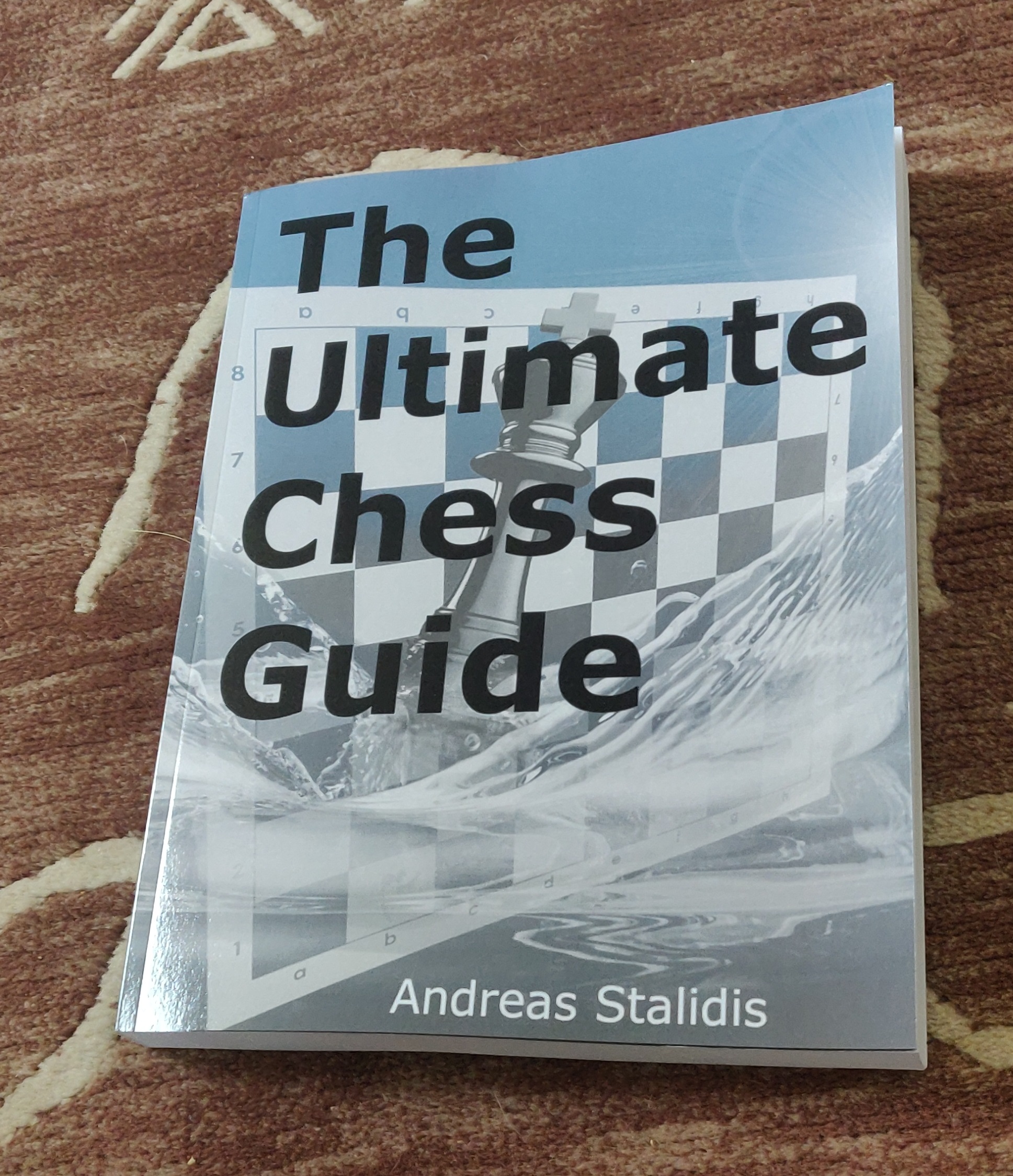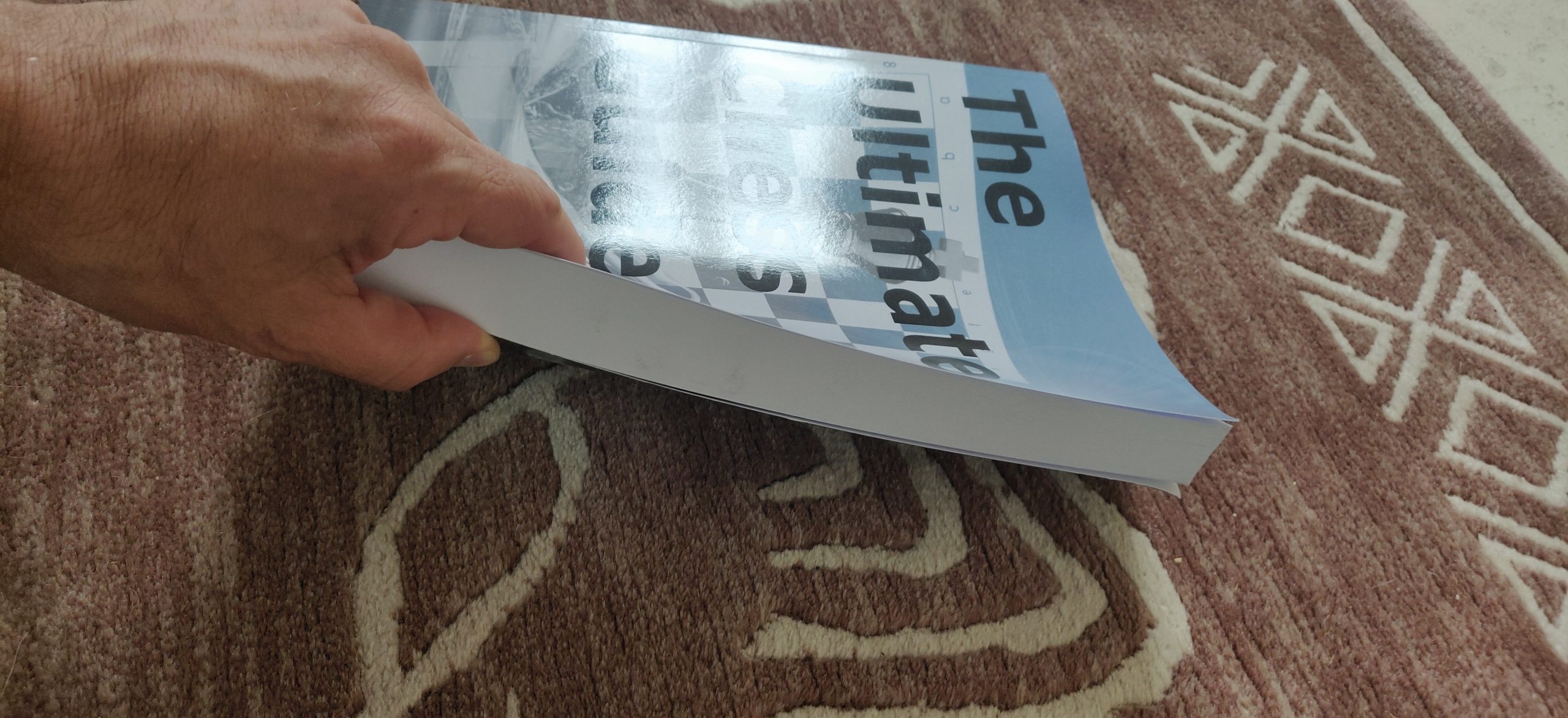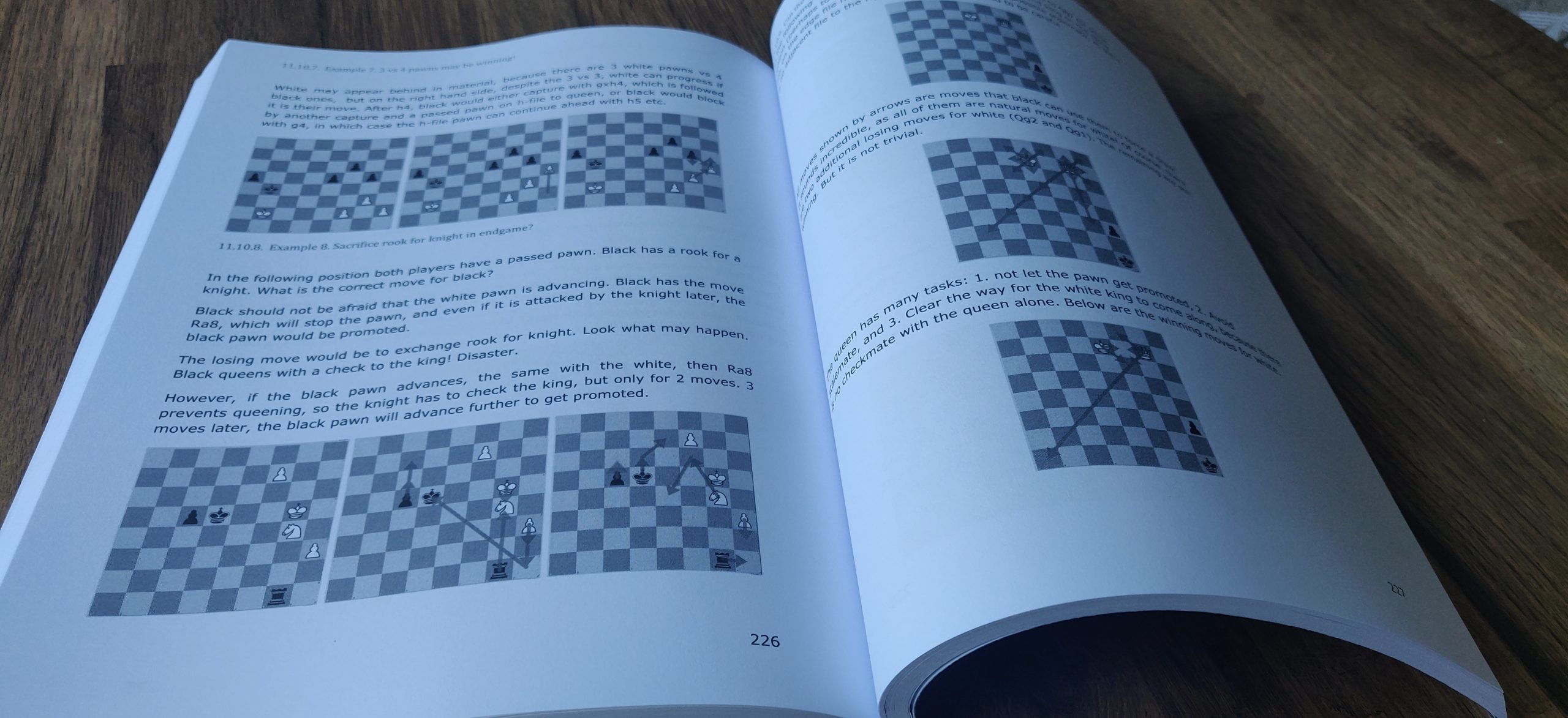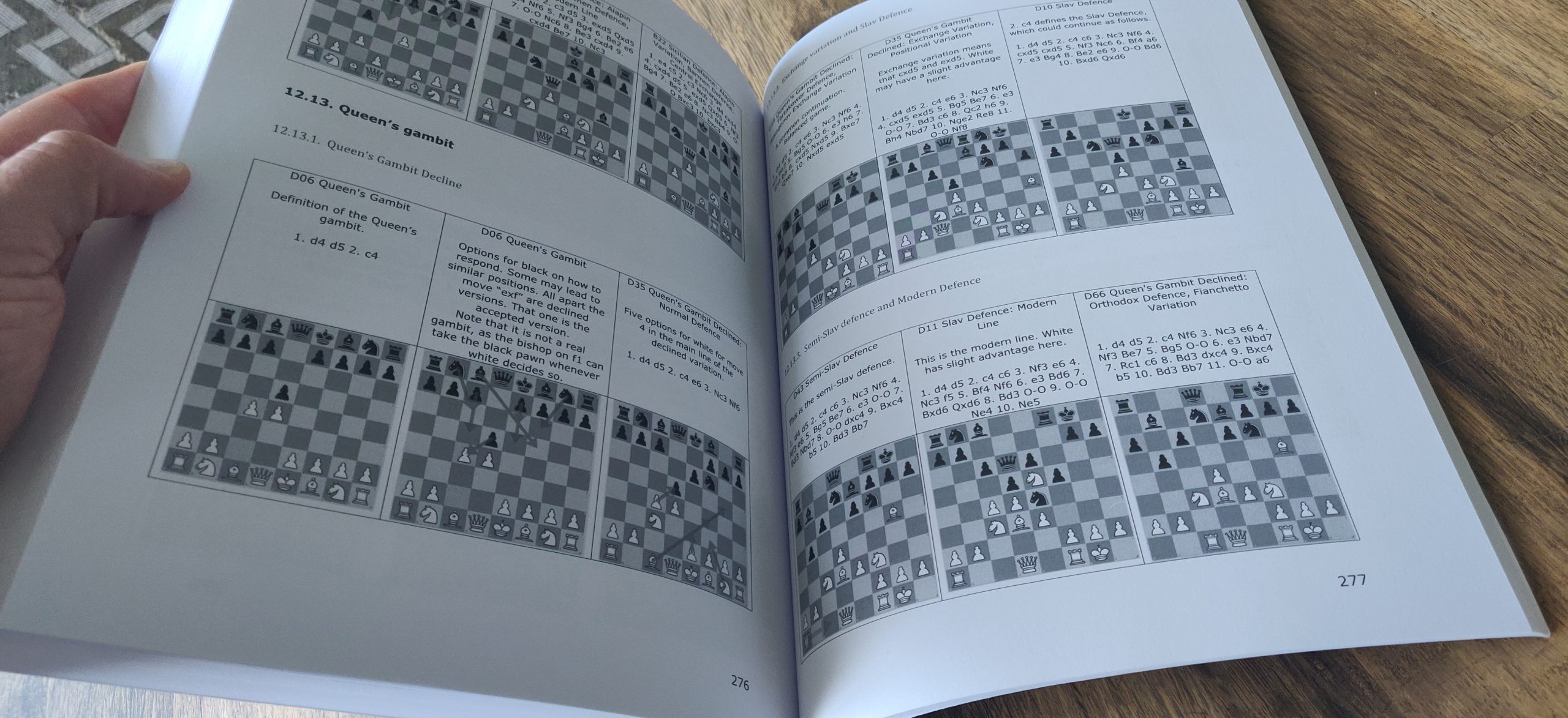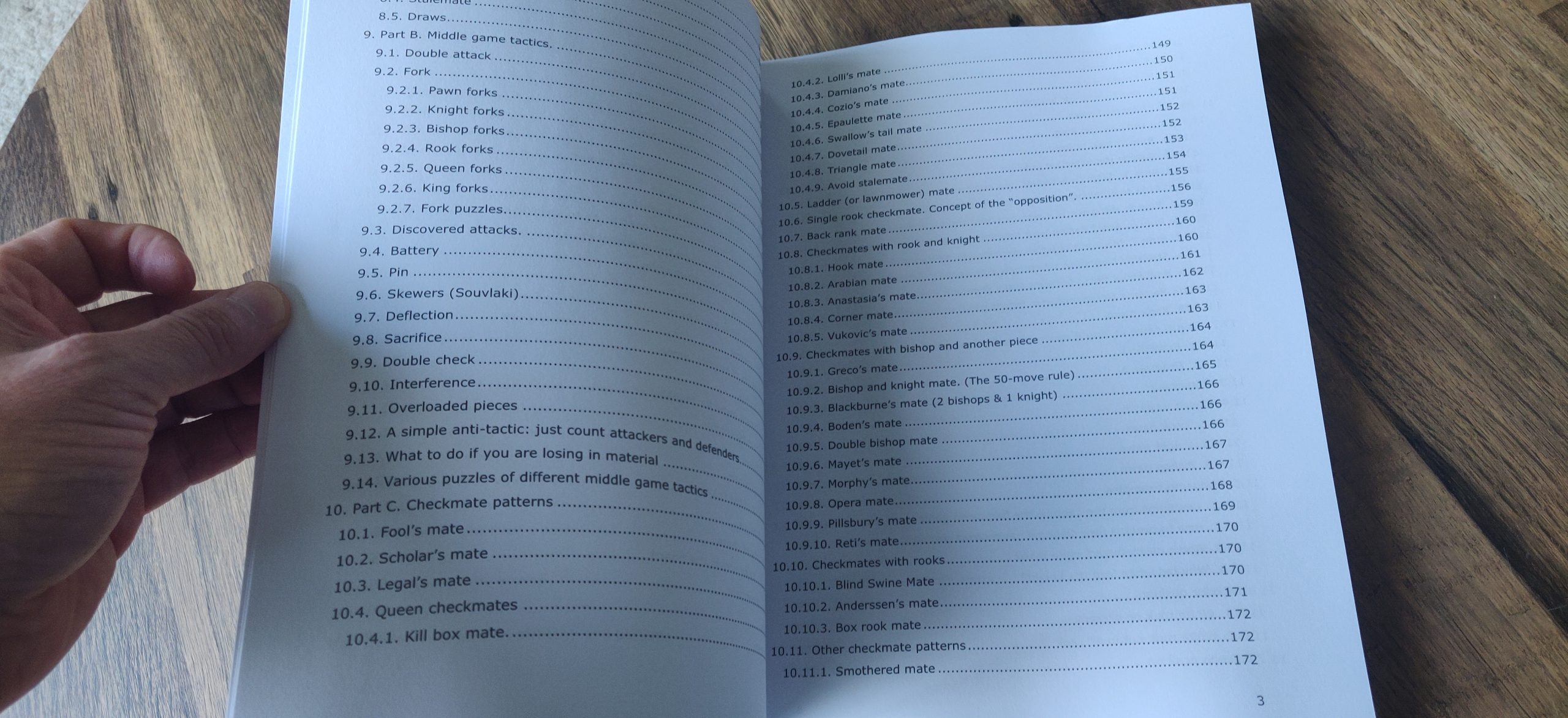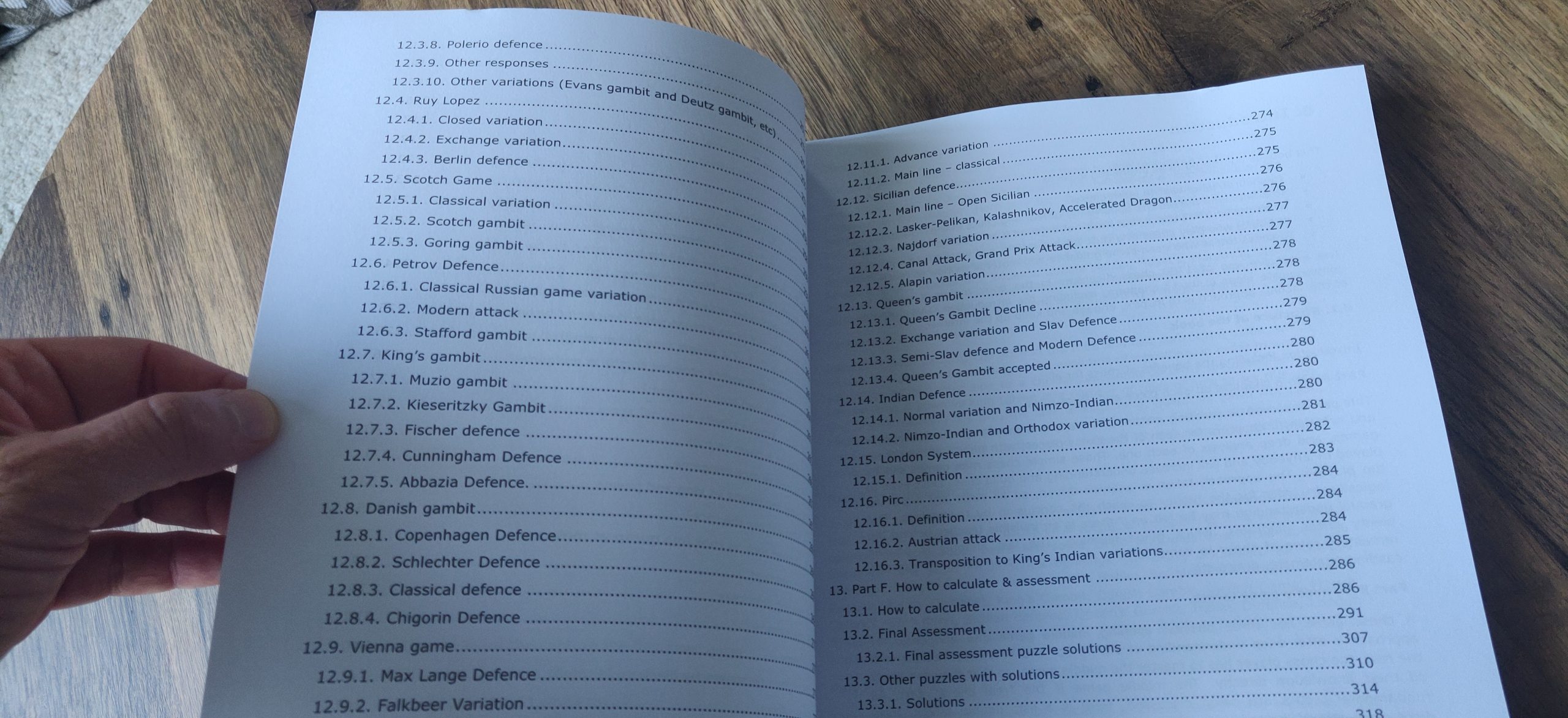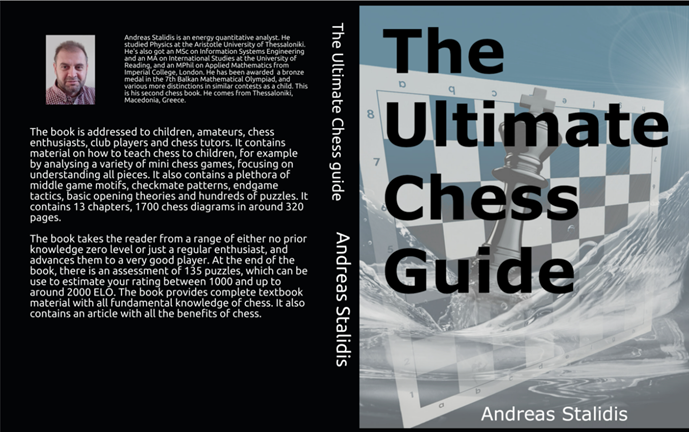I am proudly present you my new book on chess. Here is the full introduction of the book, so that you can get an idea about the structure of it!
0. Introduction
This book is addressed to all interested in chess.
- To children who want to learn chess.
- To adults who missed the opportunity of learning chess in their childhood.
- To adults who like chess, but have not enjoyed it as much as they desired.
- To adults who play chess in a club, have a rating, and want to step up.
- To chess tutors who need some guidance and material on how to teach.
The extensive use of 1700 chess diagrams in the book makes it easier to communicate ideas in its 13 chapters, excluding the introduction. This purpose of this laconic approach is to inspire, engage and keep up the interest.
0.1. Structure of the book
Introduction including the benefits of chess for all.
Part A with 8 chapters on each piece and chess rules.
This part is served as teaching material. There is one chapter on the chessboard and notation, 6 chapters for each of the chess pieces, with plenty of mini chess games, and deep analysis of each one. Those simple chess mini games can be played by anybody and will increase understanding and build chess skills even to top players! The approach taken is analysis-driven, so all steps are explained logically, in order for the reader to reach the conclusion by themselves. This gradual understanding may be felt as if there is an invisible teacher behind the plenty chess diagrams, which guide learning. The last chapter is on the remaining rules of chess to complete the picture, i.e. promotion, en-passant, castling, stalemate, draws etc.
Part B on middle game tactics.
A chess game has three phases: opening, middle game and endgame. My approach is after deep understanding of each piece and how they interact with the rest, the chess player has to master the middle game, so that they can apply all their knowledge directly. The middle game is the “real chess” part. All fundamental tactics are being discussed. Here is a list: double attack, fork, discovered attack, battery, pin, skewer (souvlaki), deflection, sacrifice, double check, interference, overloading. The chapter is finishing with some “anti-tactics”, some advice on what to do when losing, and a variety of puzzles around the topics discussed.
Part C on checkmate patterns.
The idea here is that after you are very familiar with all the pieces, their interaction, and how to take advantage of them to play real chess in the middle game, you need to know how to win! All fundamental combinations are discussed in this chapter. Here is a list: fool’s mate, scholar’s mate, Legal’s mate, Queen checkmates (Kill box, Lollil, Damiano, Cozio, Epaulette, Swallow’s tail, Dovetail, Triangle), ladder/lawnmower, single rook checkmate (concept of the opposition), back rank, Rook & Knight checkmates (Hook, Arabiam, Anastasia’s, Corner, Vukovic’s), Bishop and another piece checkmates (Greco’s, Bishop & knight, Blackbrne’s, Boden’s, Double bishop, Mayet’s, Morphy’s, Opera, Pillsbury, Reti), Rook checkmates (Blind Swine, Anderssen’s, Box rook), other patterns (smothered, suffocation, pawn, knight, Morphy’s magic knights), etc.
Part D is on endgame tactics.
Infinite different patterns can arise in the third and last part of the game, which require very good understanding of the evolution of a position, in order to win an advantage or lead your side to a checkmate. Some patterns discussed are as follows: king & pawn vs king (given in a number of rules of how to set this up), king & pawn vs king & pawn, the idea of zugzwang, queen vs pawn (for rook, knight and bishop pawn), plenty of endgame examples, Philidor position Lucena position, pawn promotion tactics and rule of thumb, and a plethora of combinations.
Part E is on the opening phase.
There is a huge asymmetry in favour of books around chess openings. Not only that, but there are series of books on a subset of an opening, or a variant of an opening! In this book, there are some basic principles and ideas about all openings, and some fundamental openings are being discussed. All the e4 openings, and a few more. Here is a list: Italian, Spanish (Ruy Lopez), Scotch, Russian (Petrov Defence), King’s Gambit, Danish Gambit, Vienna Game, French Defence, Caro Kann, Sicilian defence, Queen’s Gambit, Indian Defence, London System and the Pirc. Of course, a lot of variants are being shown in diagrams and in the series of move.
Part F is on calculation and puzzles!
There are some ideas of how to calculate in chess, which also includes a full assessment with hundreds of puzzles with and without solution. Based on the number of puzzles you solve, you could have a rough estimation of your rating level!
As you understand, this is a prolific chess book that can take the reader from a range of capability (zero to medium player) and take them a lot higher than where they are. It can serve as a reference textbook. There are around 200 puzzles with solutions and many more without solution for investigation.
You can buy it from Amazon – https://www.amazon.co.uk/dp/B099C8SB29
A few photos to get an idea about the inside of the book
